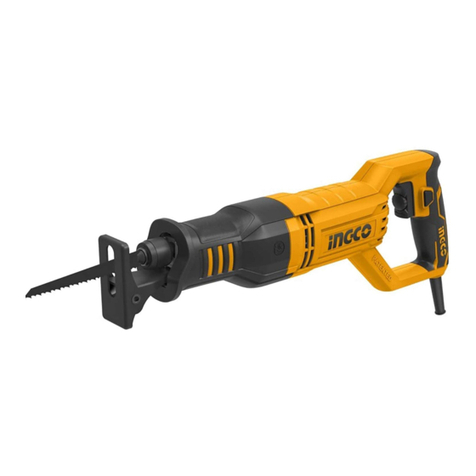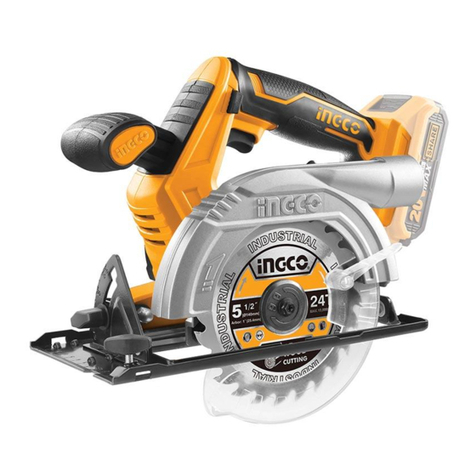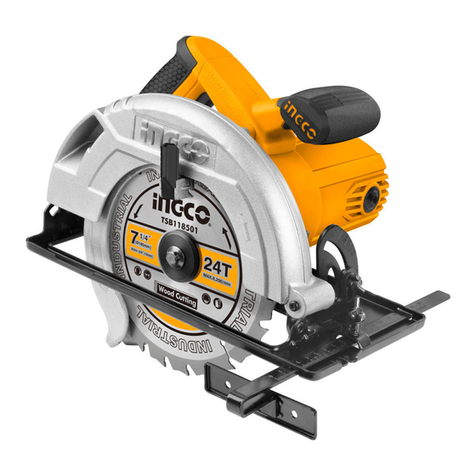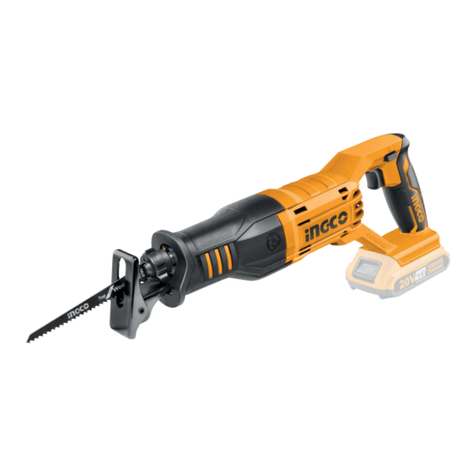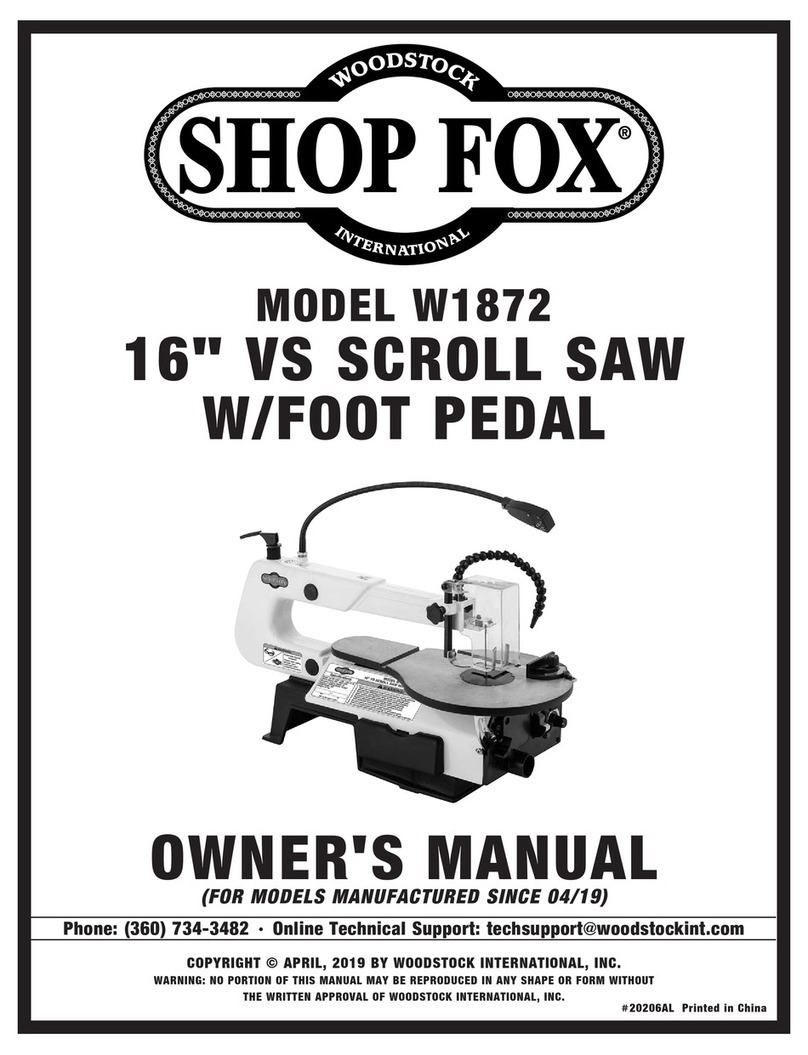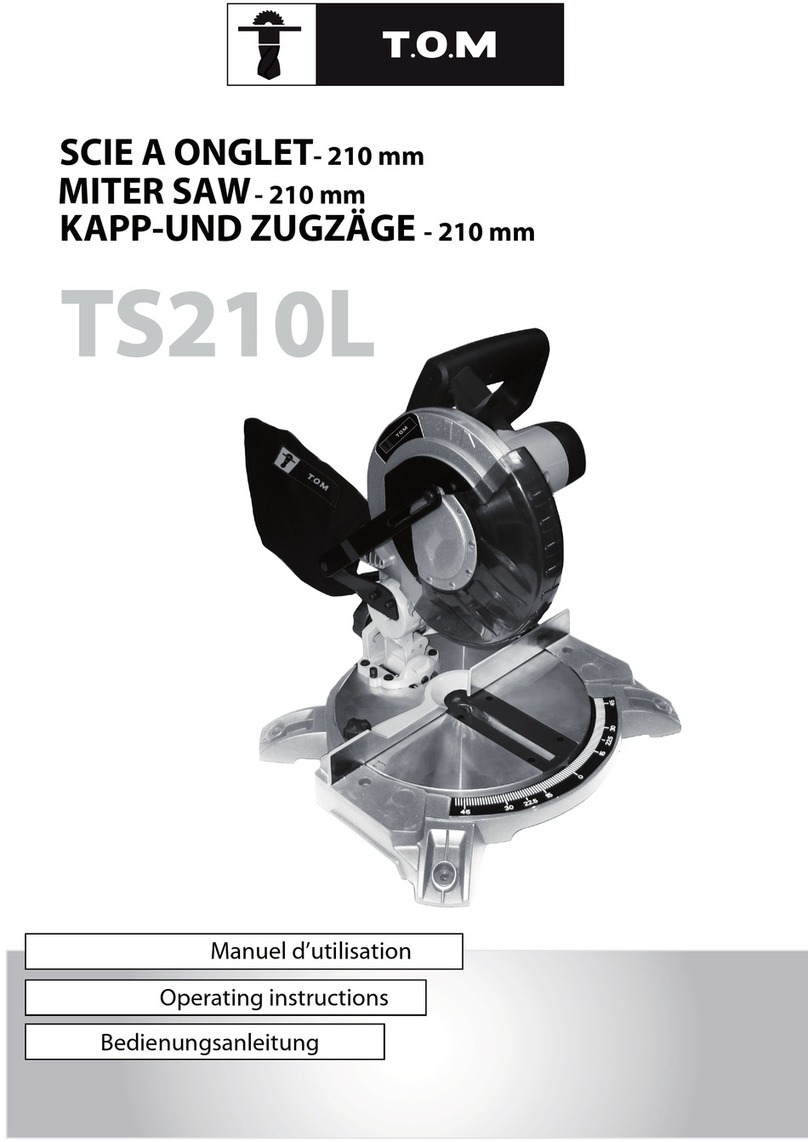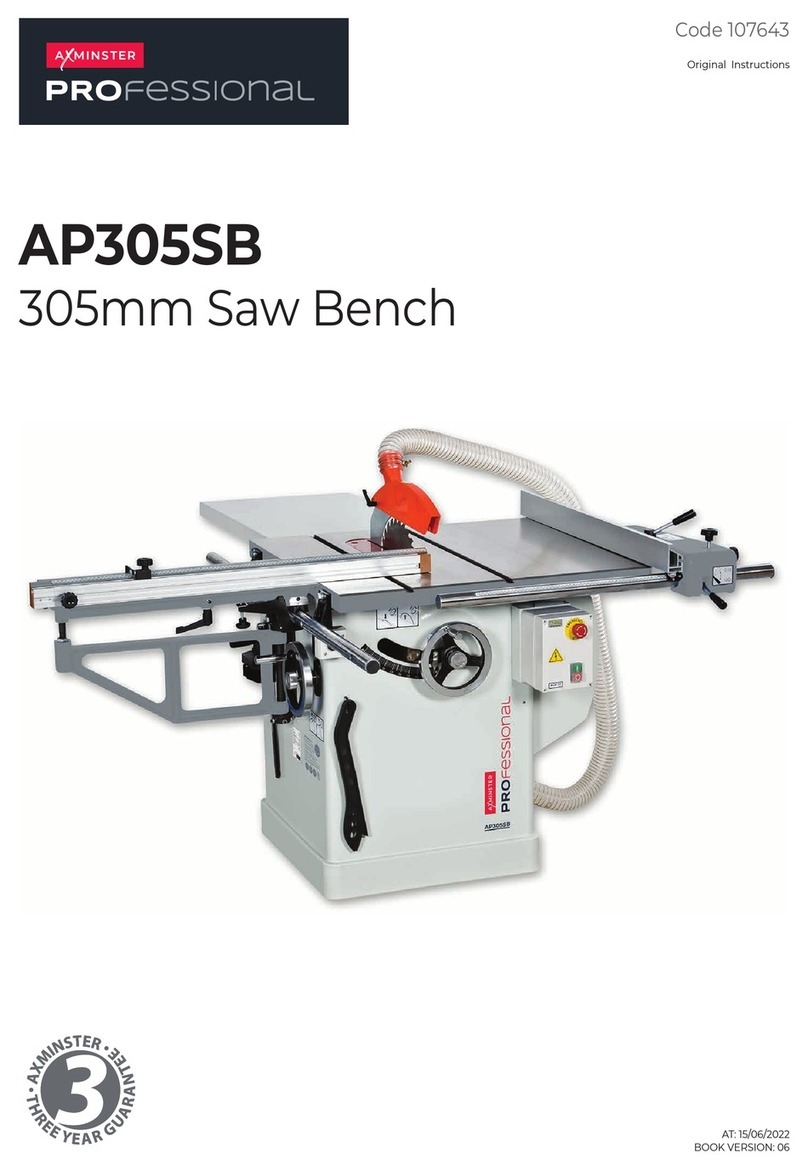Ingco BMS14007 User manual

INGCO Global
EN
Mitre Saw
BMS14007 UBMS14007 BMS14007-4
BMS14007-6 BMS14007-8 BMS14007S

The symbols in instruction manual and the label on the tool
Double insulated for additional protection.
Read the instruction manual before using.
CE conformity.
Wear safety glasses, hearing protection and dust mask.
Waste electrical products should not be disposed of with household waste.
Please recycle where facilities exist. Check with your Local Authority or
retailer for recycling advice.
Safety alert.
Please only use the accessories supported by the manufacturer.
2|English

3|English
GENERAL POWER TOOL SAFETY WARNINGS
WARNING Read all safety warnings, instructions, illustrations and
specifications provided with this power tool.Failure to follow all instructions
listed below may result in electric shock, fire and/or serious injury.
Save all warnings and instructions for future reference.
The term "power tool" in the warnings refers to your mains-operated (corded)
power tool or battery-operated (cordless) power tool.
1) Work area safety
a) Keep work area clean and well lit.Cluttered or dark areas invite
accidents.
b) Do not operate power tools in explosive atmospheres, such as in
the presence of flammable liquids, gases or dust. Power tools create
sparks which may ignite the dust or fumes.
c) Keep children and bystanders away while operating a power tool.
Distractions can cause you to lose control.
2) Electrical safety
a) Power tool plugs must match the outlet. Never modify the plug in
any way. Do not use any adapter plugs with earthed (grounded)
power tools. Unmodified plugs and matching outlets will reduce risk of
electric shock.
b) Avoid body contact with earthed or grounded surfaces, such as
pipes, radiators, ranges and refrigerators. There is an increased risk
of electric shock if your body is earthed or grounded.
c) Do not expose power tools to rain or wet conditions. Water
entering a power tool will increase the risk of electric shock.
d) Do not abuse the cord. Never use the cord for carrying, pulling
or unplugging the power tool. Keep cord away from heat, oil, sharp
edges or moving parts. Damaged or entangled cords increase the risk
of electric shock.
e) When operating a power tool outdoors, use an extension cord

4|English
suitable for outdoor use. Use of a cord suitable for outdoor use
reduces the risk of electric shock.
f) If operating a power tool in a damp location is unavoidable, use a
residual current device (RCD) protected supply. Use of an RCD
reduces the risk of electric shock.
a) Stay alert, watch what you are doing and use common sense
when operating a power tool. Do not use a power tool while you are
tired or under the influence of drugs, alcohol or medication. A
moment of inattention while operating power tools may result in serious
personal injury.
b) Use personal protective equipment. Always wear eye protection.
Protective equipment such as a dust mask, non-skid safety shoes, hard
hat or hearing protection used for appropriate conditions will reduce
personal injuries.
c) Prevent unintentional starting. Ensure the switch is in the off-
position before connecting to power source and/or battery pack,
picking up or carrying the tool. Carrying power tools with your finger
on the switch or energising power tools that have the switch on invites
accidents.
d) Remove any adjusting key or wrench before turning the power
tool on. A wrench or a key left attached to a rotating part of the power
tool may result in personal injury.
e) Do not overreach. Keep proper footing and balance at all times.
This enables better control of the power tool in unexpected situations.
f) Dress properly. Do not wear loose clothing or jewellery. Keep
your hair and clothing away from moving parts. Loose clothes,
jewellery or long hair can be caught in moving parts.
g) If devices are provided for the connection of dust extraction and
collection facilities, ensure these are connected and properly used.
Use of dust collection can reduce dust-related hazards.
h) Do not let familiarity gained from frequent use of tools allow you
to become complacent and ignore tool safety principles. A careless
action can cause severe injury within a fraction of a second.
3) Personal safety

5|English
4) Power tool use and care
a) Do not force the power tool. Use the correct power tool for your
application. The correct power tool will do the job better and safer at the
rate for which it was designed.
b) Do not use the power tool if the switch does not turn it on and
off. Any power tool that cannot be controlled with the switch is
dangerous and must be repaired.
c) Disconnect the plug from the power source and/or remove the
battery pack, if detachable, from the power tool before making any
adjustments, changing accessories, or storing power tools. Such
preventive safety measures reduce the risk of starting the power tool
accidentally.
d) Store idle power tools out of the reach of children and do not
allow persons unfamiliar with the power tool or these instructions
to operate the power tool. Power tools are dangerous in the hands of
untrained users.
e) Maintain power tools and accessories. Check for misalignment
or binding of moving parts, breakage of parts and any other
condition that may affect the power tool’s operation. If damaged,
have the power tool repaired before use. Many accidents are caused
by poorly maintained power tools.
f) Keep cutting tools sharp and clean. Properly maintained cutting
tools with sharp cutting edges are less likely to bind and are easier to
control.
g) Use the power tool, accessories and tool bits etc. in accordance
with these instructions, taking into account the working conditions
and the work to be performed. Use of the power tool for operations
different from those intended could result in a hazardous situation.
h) Keep handles and grasping surfaces dry, clean and free from oil
and grease. Slippery handles and grasping surfaces do not allow for
safe handling and control of the tool in unexpected situations.
5) Service

6|English
a) Have your power tool serviced by a qualified repair person using
only identical replacement parts. This will ensure that the safety of the
power tool is maintained.
Safety instructions for mitre saws
a) Mitre saws are intended to cut wood or wood-like products, they cannot be used
with abrasive cut-off wheels for cutting ferrous material such as bars, rods, studs,
etc. Abrasive dust causes moving parts such as the lower guard to jam. Sparks from
abrasive cutting will burn the lower guard, the kerf insert and other plastic parts.
b) Use clamps to support the workpiece whenever possible. If supporting the
workpiece by hand, you must always keep your hand at least 100 mm from either
side of the saw blade. Do not use this saw to cut pieces that are too small to be
securely clamped or held by hand. If your hand is placed too close to the saw blade,
there is an increased risk of injury from blade contact.
c) The workpiece must be stationary and clamped or held against both the fence and
the table. Do not feed the workpiece into the blade or cut “freehand” in any way.
Unrestrained or moving workpieces could be thrown at high speeds, causing injury.
d) Push the saw through the workpiece. Do not pull the saw through the workpiece. To
make a cut, raise the saw head and pull it out over the workpiece without cutting,
start the motor, press the saw head down and push the saw through the workpiece.
Cutting on the pull stroke is likely to cause the saw blade to climb on top of the workpiece
and violently throw the blade assembly towards the operator.
e) Never cross your hand over the intended line of cutting either in front or behind the
saw blade. Supporting the workpiece “cross handed” i.e. holding the workpiece to the
right of the saw blade with your left hand or vice versa is very dangerous.
f) Do not reach behind the fence with either hand closer than 100 mm from either side
of the saw blade, to remove wood scraps, or for any other reason while the blade is
spinning. The proximity of the spinning saw blade to your hand may not be obvious and
you may be seriously injured.
g) Inspect your workpiece before cutting. If the workpiece is bowed or warped, clamp it
with the outside bowed face toward the fence. Always make certain that there is no
gap between the workpiece, fence and table along the line of the cut. Bent or warped
workpieces can twist or shift and may cause binding on the spinning saw blade while
cutting. There should be no nails or foreign objects in the workpiece.
h) Do not use the saw until the table is clear of all tools, wood scraps, etc., except for
the workpiece. Small debris or loose pieces of wood or other objects that contact the
revolving blade can be thrown with high speed.
i) Cut only one workpiece at a time. Stacked multiple workpieces cannot be adequately
clamped or braced and may bind on the blade or shift during cutting.
j) Ensure the mitre saw is mounted or placed on a level, firm work surface before use.
A level and firm work surface reduces the risk of the mitre saw becoming unstable.
k) Plan your work. Every time you change the bevel or mitre angle setting, make sure
the adjustable fence is set correctly to support the workpiece and will not interfere with
or the guarding system. Without turning the tool “ON” and with no workpiece on the
or danger of cutting
the blade
table, move the saw blade through a complete simulated cut to assure there will be no interference

Residual risks
Even when the power tool is used as prescribed it is not possible to
eliminate all residual risk factors. The following hazards may arise in
connection with the power tool’s construction and design:
a) Health defects resulting from vibration emission if the power tool is being
used over longer period of time or not adequately managed and properly
maintained.
b) Injuries and damage to property to due to broken accessories that are
suddenly dashed.
Warning! This power tool produces an electromagnetic field during
operation. This field may under some circumstances interfere with active or
passive medical implants. To reduce the risk of serious or fatal injury, we
recommend persons with medical implants to consult their physician and the
medical implant manufacturer before operating this power tool.
the fence.
l) Provide adequate support such as table extensions, saw horses, etc. for a
workpiece that is wider or longer than the table top .Workpieces longer or wider than
the mitre saw table can tip if not securely supported. If the cut-off piece or workpiece tips,
it can lift the lower guard or be thrown by the spinning blade.
m) Do not use another person as a substitute for a table extension or as additional
support. Unstable support for the workpiece can cause the blade to bind or the workpiece
to shift during the cutting operation pulling you and the helper into the spinning blade.
n) The cut-off piece must not be jammed or pressed by any means against the spinning
saw blade. If confined, i.e. using length stops, the cut-off piece could get wedged against
the blade and thrown violently.
o) Always use a clamp or a fixture designed to properly support round material such
as rods or tubing. Rods have a tendency to roll while being cut, causing the blade to
“bite” and pull the work with your hand into the blade.
p) Let the blade reach full speed before contacting the workpiece. This will reduce the
risk of the workpiece being thrown.
q) If the workpiece or blade becomes jammed, turn the mitre saw off. Wait for all
moving parts to stop and disconnect the plug from the power source and/or remove
the battery pack. Then work to free the jammed material. Continued sawing with a
jammed workpiece could cause loss of control or damage to the mitre saw.
r) After finishing the cut, release the switch, hold the saw head down and wait for the
blade to stop before removing the cut-off piece. Reaching with your hand near the
7|English
s
) Hold the handle firmly when making an incomplete cut or when releasing the switch
b
efore the saw head is completely in the down position. The braking action of the saw
m
ay cause the saw head to be suddenly pulled downward, causing a risk of injury.

SPECIFICATION
PART LIST
On/Off SwitchDust Collecting Bag
Carbon Brush
Cover
Movable Guard
Movable Base
Gradient Base
Fence
Handle
Fixed Base
Extension Bar
Working Clamp
Blade
Model No.
Rated Input power:
Rated voltage:
No-load speed:
Blade diameter:
Number of teeth:
Mitre table angles:
Bevel cuts:
Straight cut at 0 x 0 :
Mitre cut at 45 x 0 :
Bevel cut at 0 x 45 :
Compound mitre cut
at 45x 45 :
Insulation class:
W
- /60Hz
5000/min
mm x e
4
0to 45 to the left &right
0to 45 to the left
mm x 60mm
83mm x 60mm
mm x 30mm
83mm x 30mm
Double insulated
BMS14007,BMS14007-4,
BMS14007-6(ISRAEL Plug),
BMS14007-8(BS Plug),
BMS14007S(SAA Plug)
W
- Hz
5000/min
- /4˝x ˝bore
4
0to 45 to the left &right
0to 45 to the left
/˝
/4˝
/˝/˝
/4˝/˝
Double insulated
UBMS14007
8|English
2-9/25˝
2-9/25˝

EXAMINE ALL PARTS CAREFULLY
WARNING!
If any part is missing or damaged, do not plug in the mitre saw until you
have replaced the missing or damaged parts.
GENERAL SAFETY RULES
WARNING!
When using electric tools basic safety precautions should always be
Read all these instructions before attempting to operate your product.
Save these instructions for future reference.
2) Consider work area environment. Do not expose tools to rain. Do not
use tools in damp or wet locations. Keep work area well lit. Do not use
3) Guard against electric shock. Avoid body contact with earthed or
grounded surfaces.
4) Keep other people away. Do not let others, especially children, not
involved in the work touch the tool or the extension lead and keep them
away from the work area.
5) Store idle tools. When not in use, tools should be stored in a dry
locked-up place, out of reach of children.
which it was intended.
ton od elpmaxe rof ;dednetni ton sesoprup rof sloot esu ton oD .loot ytud
use circular saws to cut tree limbs or logs.
be caught in moving parts. Non-skid footwear is recommended when
working outdoors. Wear protective hair covering to contain long hair.
9) Use protective equipment. Use safety glasses. Use face or dust mask
9|English

if cutting operations create dust.
eht rof dedivorp era secived fI .tnempiuqe noitcartxe tsud tcennoC )01
connection of dust extraction and collecting equipment, ensure these
are connected and properly used.
11) Do not abuse the cable. Never pull the cable to disconnect it from
the socket. Keep the cord away from heat, oil and sharp edge.
12) Secure work. Where possible use clamps or a vice to hold the work.
It’s safer than using your hand.
13) Don’t overreach. Keep proper footing and balance at all time.
14) Maintain tools with care. Keep cutting tools sharp and clean for better and safer
performance. Follow instructions for lubricating and changing accessories.
Inspect tool cords periodically and if damaged have them repaired by
an authorized service facility. Inspect extension cords periodically and replace if
damaged. Keep handles dry, clean and free from oil and grease.
15) Disconnect tools. When not in use, before servicing and when
changing accessories such as blades, bits, cutters, disconnect tools
from the power supply.
turning it on.
plugging in.
18) Use outdoor extension leads. When the tool is used outdoors, use
only extension leads intended for outdoor use and so marked.
19) Stay alert. Watch what you are doing, use common sense and do
not operate the tool when you are tired.
20) Check damaged parts. Before further use of the tool, it should be
carefully checked to determine that it will operate properly and perform
its intended function. Check the alignment of moving parts, binding of
moving parts, breakage of parts, mounting and any other conditions that
may affect its operation. A guard or other part that is damaged should
be properly repaired or replaced by an authorized service centre unless
otherwise indicated in this instruction manual. Do not use the tool if the
10|English

switch does not turn it on and off.
21) WARNING. The use of any accessory or attachment other than one
recommended in this instruc tion manual may present a risk of personal
22) Have you r to ol repaired by a qu alified person . This electric
to ol com p lies w it h th e relevant safety rules. Repairs should only be
th is may result in considerable dange r to the user.
.ADDITIONAL SAFETY RULES FOR MITRE SAWS
1) This saw is recommended for cutting wood, non-ferrous metal and
plastic only.
NOTE: The TCG blade comes with thisproduct is not suitable for cutting
metals.
2) Never use asaw blade which isnot recommend wosihtni ner’ msanual.
3) Do not use saw blades with high speed steel (HSS)or damaged or
deformed.
redrognikrowdoogni,noitisopnisdraugtuohtiwwasehtesutonoD)4
and properly maintained.
5) Replace the table insert when worn.
6) Use only saw blades recommended by the manufacturer and which
conforms to EN847-1.
7) Connect your mitre saw to a dust collecting device (1. D. 32mm)
when sawing.
8) Select saw blades in relation to the material to be cut.
9) Check the maximum depth of cut.
10) When sawing long work pieces, always use extra support to provide
better support, and use clamps or other clamping devices.
11) Wear suitable personal protective equipment when necessary, this
could include:
- hearing protection to reduce the risk of induced hearing loss ;
- eye protection;
- respiratory protection to reduce the risk of inhalation of harmful dust;
11|English

- gloves for handling saw blades (saw blades shall be carried in a holder
wherever practicable) and rough material.
WARNING!
of loose materials e.g. chips and cut-offs.
Use correctly sharpened saw blades. Observe the maximum speed
marked on the saw blade.
Repairs sh all only be carried out by the laser m anufacturer or an
authorised agent.
morf eceipkrow eht fo strap rehto ro sffo-tuc yna gnivomer morf niarfeR
the cutting area whilst the machine is running and the saw head is not
in the rest position.
operation of the machine.
13) Provide for adequate room lighting at your workpiece or for adequate
lighting of the immediate work area.
14) Refrain from removing any cut-offs or other parts of the workpiece
si daeh was eht dna gninnur si enihcam ehttslihw aera gnittuc eht morf
not the rest position.
tips over or when coming in contact with the saw blade.
17) Remove all nails that may be in the workpiece to prevent sparking
.was ertim eht naelc ot stnevlos elitalov ylhgih ralimis ro renniht reuqcal
19) Keep the saw with proper footing on a table to decrease noise and
vibration.
20) Always use the designated carrying handle for transportation.
12|English

SYMBOLS V ............ volts A........... amperes
Hz........... hertz W............. watts
min......... minutes~....... alternating current
h........... hours Class II Construction
I …………...ON O ............... OFF
min -1 …………………..revolutions per minute
Wear safety goggles
Wear ear protection
Wear a breathing mask
and all bystanders must read and understand instruction manual before using
this product.
Keep hands away from blade: Failure to keep your hands away
ENVIRONMENTAL PROTECTION
Waste electrical products should not be disposed of with household waste.
Please recycle where facilities exist. Do not dispose of electrical
appliances as unsorted municipal waste, use separate collection facilities.
Contact your local government for information regarding the collection
dumps, hazardous substances can leak into the groundwater and get
into the food chain, damaging your health and wellbeing. When replacing
old appliances with new once, the retailer is legally obligated to take back your
old appliance for disposal at least for free of charge. Disposal of discarded
material shall be in accordance with local environmental regulations.
13|English

BMS14007 , UBMS14007 , BMS14007-4 , BMS14007-6 , BMS14007-8 , BMS14007S
14|English

SPARE PART LIST
NO. Part Description Qty NO. Part Description Qty
Screw M10X10
Spring
Steel Ball Φ8.5
Nut M8
Base
Bracket
Screw M5X12
Screw M5X8
Bracket Baffle
Nut M6
Screw M6×15
Flat washer Φ8XΦ4X0.5
Label
Standard spring washer 4
Screw M4X12
Washer
Big Fence
Knob
Flat washer Φ12XΦ6X1
Standard spring washer 6
Screw M6X30
Active Fence
Flat washer Φ18XΦ6X1.5
Screw M5X25
Rotation Plate
Slotted Plate
Sign Label
Flat washer Φ16XΦ8X1
Standard spring washer 8
Screw M8X25
Nut M5
Screw M5X20
Screw M6X20
Nut M6
Label
1
2
3
4
5
6
7
8
9
10
11
12
13
14
15
16
17
18
19
20
21
22
23
24
25
26
27
28
29
30
31
32
33
34
35
36
37
38
39
40
41
42
43
44
45
46
47
48
49
50
51
52
53
54
55
56
57
58
59
60
61
62
63
64
65
66
67
68
69
70
Bracket
Cap of Rocker Pin
Rocker Pin
Screw/8.8 M4X8
Screw/8.8 M4X8
Screw M4X16
Flat washer Φ20XΦ8X2
Big Spring
Trident Wheel
Nut M5
Connect Head
Upper Limited Sheath
Oil seal 5
Cap of Sheath
Bolt M10X70
Cap of Brush Holder
Carbon Brush
Brush Holder
Housing
Screw M5X35
Standard spring washer 5
Flat washer Φ10XΦ5X0.5
Bearing Housing
Bearing 608
Stator
Screw ST5X60
Armature
Bearing 6200
Anti-wind Ring
Lock
Spring
Blade Protection
Nut M10
Flat washer Φ20XΦ10X2
Blade Cover
1
1
1
1
1
2
9
2
1
1
1
2
1
2
5
1
1
4
4
2
4
1
1
1
1
1
1
1
1
1
6
4
2
2
1
1
2
1
1
1
1
1
1
1
1
1
1
1
1
1
2
2
2
1
4
11
20
1
1
1
2
1
1
1
1
1
1
1
2
1
BMS14007 , UBMS14007 , BMS14007-4 , BMS14007-6 , BMS14007-8 , BMS14007S
15|English

SPARE PART LIST
NO. Part Description Qty NO. Part Description Qty
Screw M5X40
Lock Base
Lock Trigger
Spring
Screw M5X16
Retainer Plate
Revit 5*12
Cleading
Sheath
ScrewST4X10
Flat washer Φ13XΦ4X1
Guide Pulley
Transparent Cover
Coil Spring
Board
Positioning Plate
Revit
Screw
Retainer Plate
Upper Connecting Rod
Middle Connecting Rod
Lower Connecting Rod
Screw
Needle Bearing(HK0810)
Spring Washer12
Gear
Front Cover
Bearing 6002
Press Cover
Square Key 4x4x12
Spindle
71
72
73
74
75
76
77
78
79
80
81
82
83
84
85
86
87
88
89
90
91
92
93
94
95
96
97
98
99
100
101
102
103
104
105
106
107
108
109
110
111
112
113
114
115
116
117
118
119
120
121
122
123
124
125
126
127
128
129
130
131
Inner Flange
Screw M4X8
Blade
Outer Flange
Screw M8X16
ScrewST4X16
Down Handle
Spring
Switch
Switch Trigger
Capacitance
Laser Switch
Switch Button
Lead Wire
Upper Handle
Handle
Screw M5X30
ScrewST5X65
Cable clamp
Cable
Cable Armor
Vise Clamp
Vise Bolt
Vise Handle
Connect Bar
Stand Bar Cover
Stand Bar
Wrench
Dust Bag
Screw M5X25
1
1
1
1
4
1
3
1
1
2
1
1
1
1
1
1
3
1
1
1
1
1
2
1
1
1
1
1
1
1
1
1
3
1
1
1
8
1
1
1
1
1
1
1
2
1
1
2
2
1
1
1
1
1
1
1
2
1
1
1
1
BMS14007 , UBMS14007 , BMS14007-4 , BMS14007-6 , BMS14007-8 , BMS14007S
16|English

www.ingco.com
MADE IN CHINA
0621.V01
No. 45 Songbei Road, Suzhou
Industrial Park, China.
INGCO TOOLS CO., LIMITED
BMS14007 UBMS14007 BMS14007-4
BMS14007-6 BMS14007-8 BMS14007S
This manual suits for next models
5
Table of contents
Other Ingco Saw manuals
Popular Saw manuals by other brands
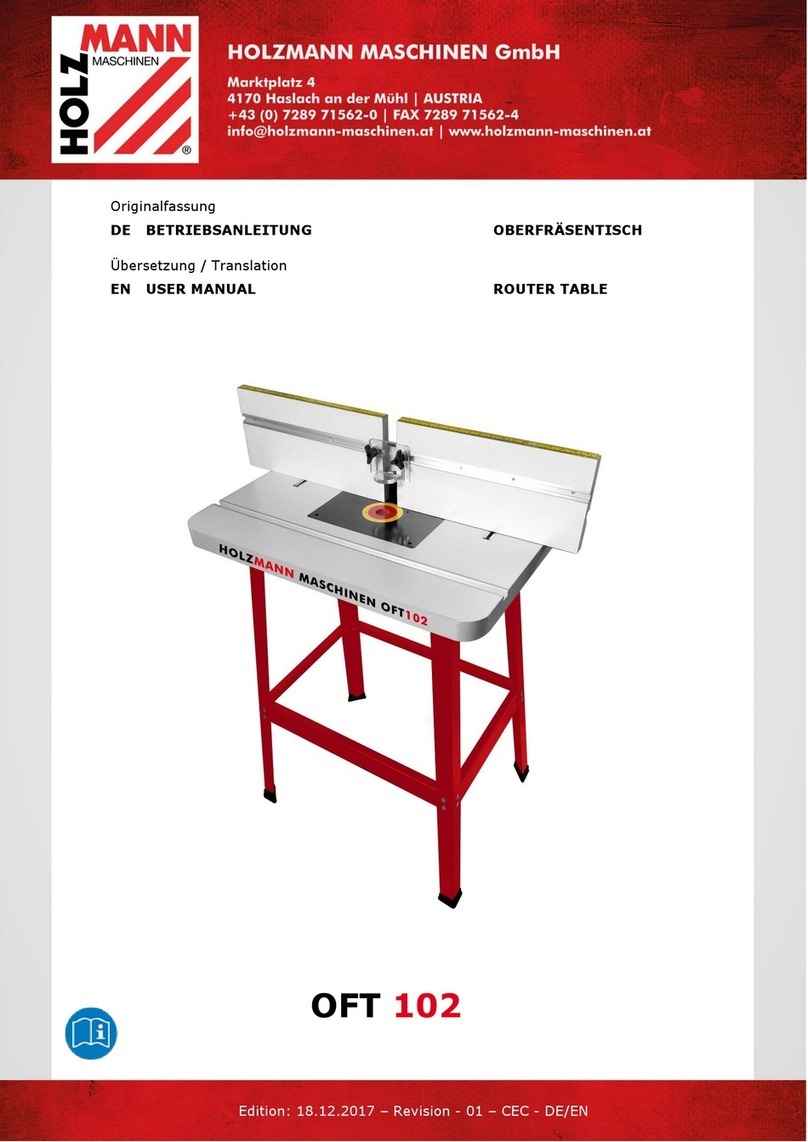
Holzmann
Holzmann OFT 102 user manual
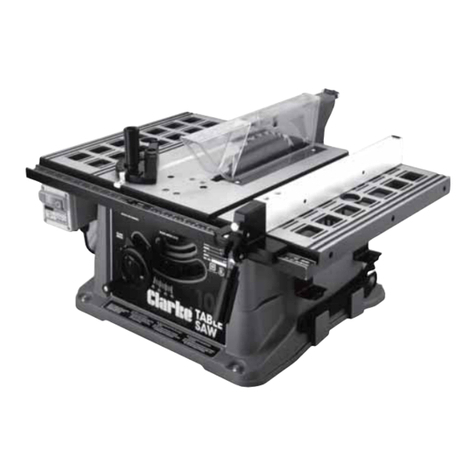
Clarke
Clarke Woodworker CTS10PLM operating & maintenance manual
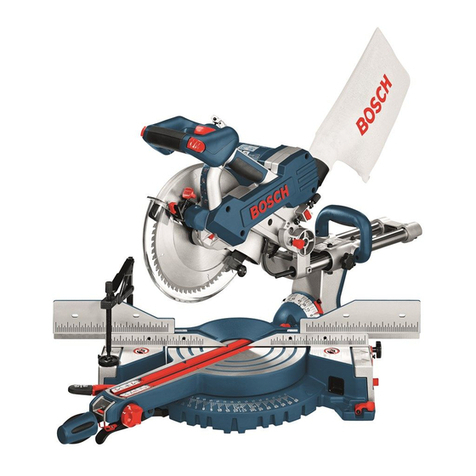
Bosch
Bosch GCM 10 PROFESSIONAL Original instructions
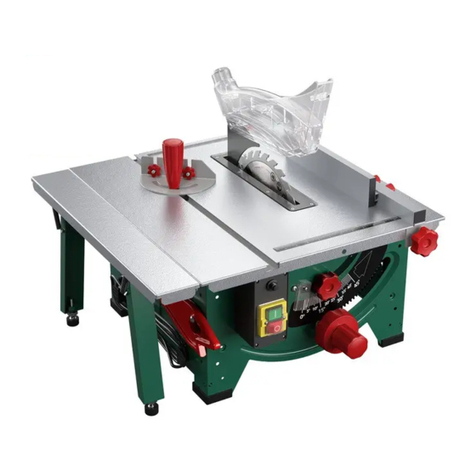
Parkside
Parkside PMTS 210 A1 Operating and safety instructions

Draper
Draper BS200A Instructions for use
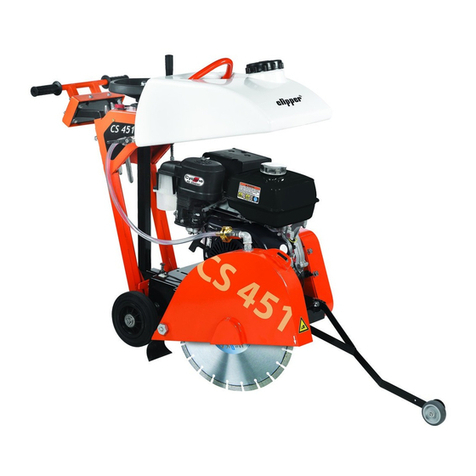
Norton
Norton CS 451 P13 Operating instructions and spare parts list
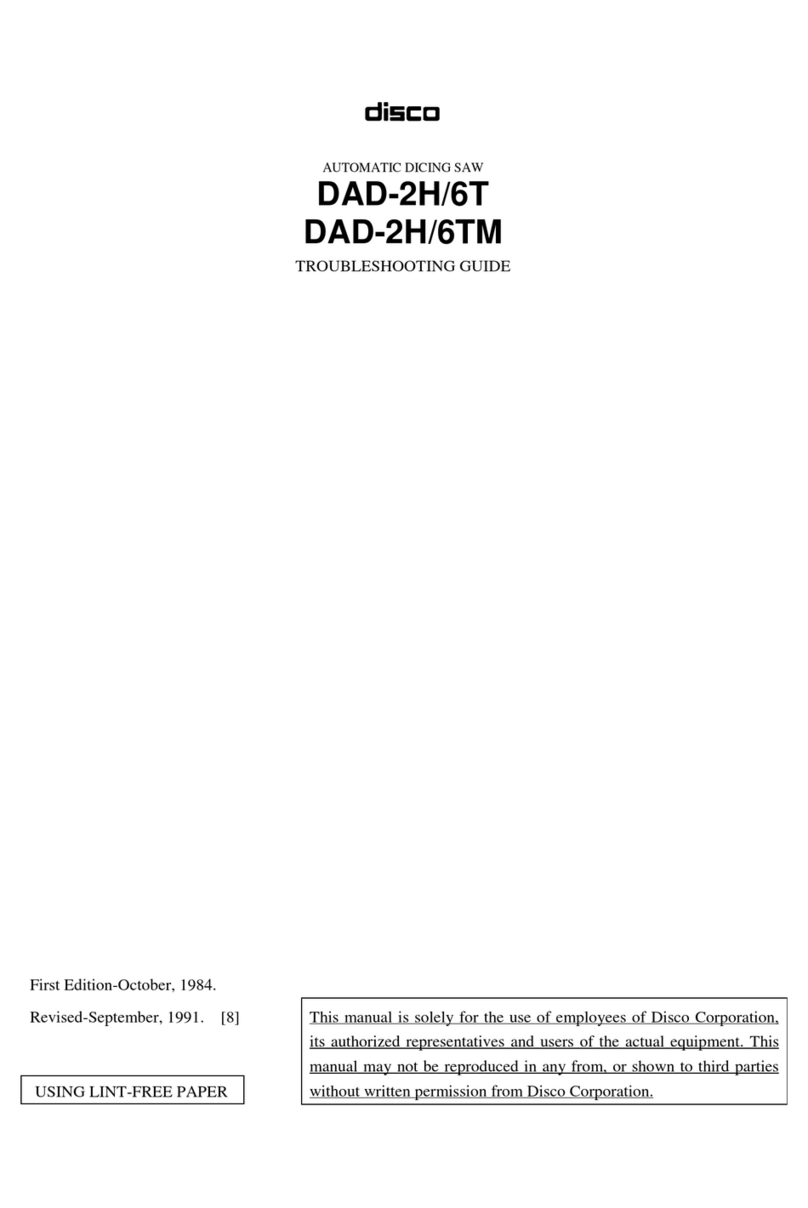
DISCO
DISCO DAD 2H/6T troubleshooting guide
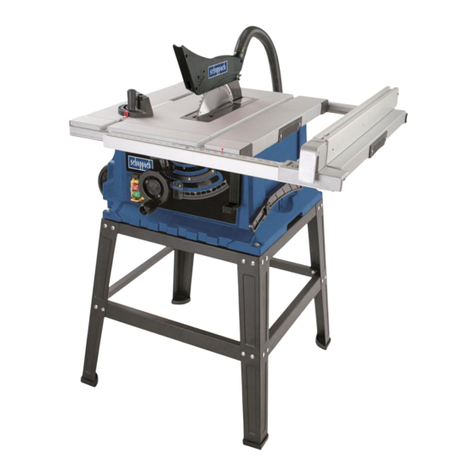
Scheppach
Scheppach HS105 Translation of original instruction manual

widos
widos RSR 630 Working Instructions Translation

Husqvarna
Husqvarna K 7000 Operator's manual
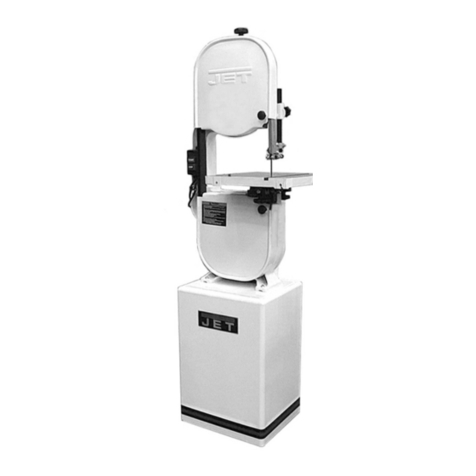
Jet
Jet JWBS-14DX Operating instructions and parts manual
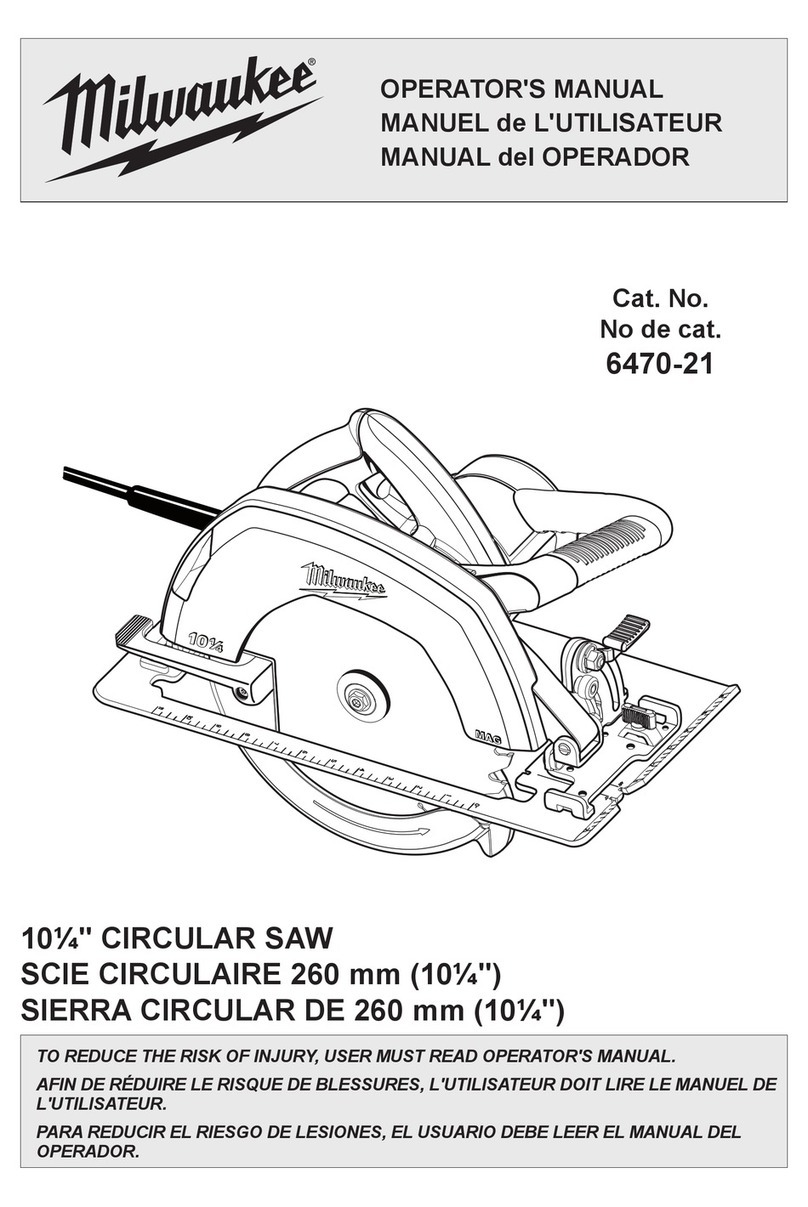
Milwaukee
Milwaukee 6470-21 Operator's manual
